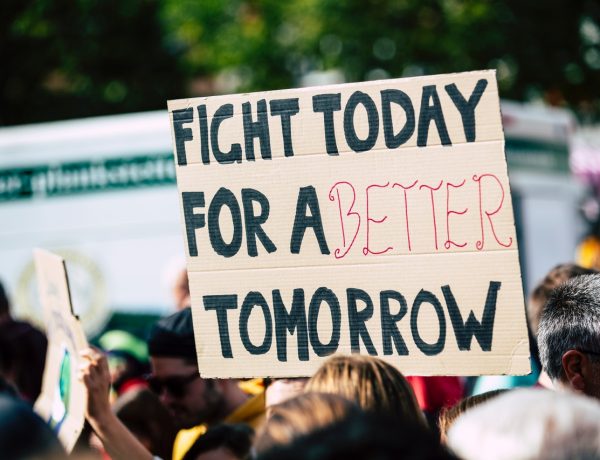On September 18th, 2020, Justice Ruth Bader Ginsburg passed away from pancreatic cancer at 87 years old. An early litigator for women’s rights and ardent champion of progressive causes, Ginsburg founded the Women’s Rights Project at the ACLU and brought cases to the Supreme Court that consequently affirmed protections against gender discrimination. Her pronouncements of gender inequality and commitment to liberal jurisprudence continued throughout her trailblazing career. Appointed in 1993, Ginsburg spent 27 years on the bench as the second woman to serve on the Supreme Court. Reverently nicknamed “The Notorious RBG,” Ginsburg played a pivotal role in a number of Supreme Court rulings over the course of her tenure; as the high court grew increasingly conservative in her later years, she became especially recognized for her dissents, a driving force that shaped the lives of women, minorities, the LGBTQIA community, immigrants, and countless other Americans. As we mourn the loss of Justice Ginsburg and honor her legacy, here is a look at some of her most notable dissents and decisions.
United States v. Virginia, 1996
In United States v. Virginia (1996), a landmark ruling for equal access to education, Justice Ginsburg’s majority decision struck down the Virginia Military Institute’s male-only admissions policy. Earlier in the year, the United States had sued the Institute — the last publicly-funded all-male university in the country —for its gender-based discrimination. When the case reached the Supreme Court, Virginia contested that women were not equipped to attend VMI and that a separate women’s-only military program at Mary Baldwin University would suffice. A 7-1 ruling determined that Virginia’s gender-based discrimination violated the Fourteenth Amendment’s Equal Protection Clause, with Ginsburg writing that “generalizations about ‘the way women are,’ estimates of what is appropriate for most women, no longer justify denying opportunity to women whose talent and capacity place them outside the average description.”
Olmstead v. LC, 1999
In 1999, Olmstead v. LC ruled 6-3 that people with mental disabilities had the right to live in community-based housing under Title II of the Americans with Disabilities Act. The Supreme Court voted in favor of Lois Curtis and Elaine Wilson — two women who were held in isolation at the psychiatric unit of a state-run hospital — arguing that Georgia had violated the ADA’s integration mandate. Justice Ginsburg wrote the majority opinion, asserting that the “unjustified isolation” of Curt and Wilson “reflects two evident judgments. First, institutional placement of persons who can handle and benefit from community settings perpetuates unwarranted assumptions that persons so isolated are incapable or unworthy of participating in community life…. Second, confinement in an institution severely diminishes the everyday life activities of individuals, including family relations, social contacts, work options, economic independence, educational advancement, and cultural enrichment.”
Bush v. Gore, 2000
In Bush v. Gore, one of the most controversial and notable dissents of her tenure, Ginsburg dissented the court’s abrupt 5-4 decision to halt a manual recount of Florida’s ballots. Following the highly contentious race in Florida during the 2000 election cycle, George W. Bush’s campaign requested to suspend a vote recount ordered by the Florida Supreme Court. Ginsburg criticized the court’s violation of judicial restraint— namely, respecting the mandates of state Supreme Courts — and apparent bias towards Bush. As she famously wrote, “The Court assumes that time will not permit ‘orderly judicial review of any disputed matters that might arise.’ But no one has doubted the good faith and diligence with which Florida election officials, attorneys for all sides of this controversy, and the courts of law have performed their duties. Notably, the Florida Supreme Court has produced two substantial opinions within 29 hours of oral argument. In sum, the Court’s conclusion that a constitutionally adequate recount is impractical is a prophecy the Court’s own judgment will not allow to be tested. Such an untested prophecy should not decide the Presidency of the United States. I dissent.”
Grutter v. Bollinger, 2003
In this landmark ruling regarding affirmative action, the Supreme Court contended that race should be considered as a factor in college admissions. The case arose when Barbara Grutter, who applied to Michigan Law School and was allegedly denied admissions due to the admission office’s preference for other racial groups. The university admitted to favoring certain minority races when making admissions decisions because it serves a “compelling interest in achieving diversity among its student body.” The court voted 5-4 that racial diversity is a valid reason for permitting affirmative action. Ginsburg wrote a long-term forecast, writing, “From today’s vantage point, one may hope, but not firmly forecast, that over the next generation’s span, progress toward nondiscrimination and genuinely equal opportunity will make it safe to sunset affirmative action.”
Ledbetter v. Goodyear Tire & Rubber Co., 2007
In 2007, Ginsburg dissented the court’s 5-4 ruling that denied Lilly Ledbetter’s right to sue Goodyear Tire & Rubber Company for unequal pay due to the amount of time that had passed since the violation. After 19 years of employment, Ledbetter had sued the company after discovering that she was paid less than her male counterparts. She argued that it was a violation of Title VII of the Civil Rights Act of 1964, but the company countered that discrimination-based charges had to be filed within 180 days following the violation. When the Supreme Court voted in favor of Goodyear, Ginsburg argued Ledbetter had not known about her unequal pay earlier. She galvanized public attention towards the gender pay gap by publicly reading about the case on the bench and pressing Congress to amend the clause. As she wrote, “Our precedent suggests, and lower courts have overwhelmingly held, that the unlawful practice is the current payment of salaries infected by gender-based (or race-based) discrimination – a practice that occurs whenever a paycheck delivers less to a woman than to a similarly situated man.”
Gonzales v. Carhart, 2007
In Gonzales v. Carhart, one of the most significant rulings on reproductive justice since Roe v. Wade, the Supreme Court voted 5-4 to uphold Congress’ Partial-Birth Abortion Ban Act of 2003. Though opponents of the ban asserted that the procedure was the safest way to end a late-term pregnancy, Justice Anthony Kennedy wrote for the majority that “Respondents have not demonstrated that the Act, as a facial matter, is void for vagueness, or that it imposes an undue burden on a woman’s right to abortion based on its overbreadth or lack of a health exception.” Ginsburg, who was the only woman on the court, responded that “the Act, and the Court’s defense of it, cannot be understood as anything other than an effort to chip away at a right declared again and again by this Court — and with increasing comprehension of its centrality to women’s lives.” Though uncommon at the time, she stood up to read her dissent, adding that “The court deprives women of the right to make an autonomous choice, even at the expense of their safety. This way of thinking reflects ancient notions about women’s place in the family and under the Constitution — ideas that have long since been discredited.”
Shelby County v. Holder, 2013
In 2013, the Supreme Court nullified a central provision of the Voting Rights Act with a 5-4 vote, freeing nine predominantly Southern states to revise voting requirements without preclearance. Shelby County, Alabama had challenged Section 4B of the historic legislation, which prohibited discriminatory practices in voting at the state level. Claimed that the antiquated restrictions violated state rights, the court agreed and struck down the provision as unconstitutional. In a scathing dissent, Ginsburg wrote that “Throwing out preclearance when it has worked and is continuing to work to stop discriminatory changes… is like throwing away your umbrella in a rainstorm because you are not getting wet.”
Burwell v. Hobby Lobby
In 2012, Ginsburg dissented the Supreme Court’s 5-4 ruling that for-profit companies should not be required to pay for insurance coverage of contraception. Hobby Lobby Stores, a family-owned arts and crafts chain that had organized its business around Biblical principles, claimed that being required to pay for employees’ access to contraception violated the Free Exercise Clause of the First Amendment and the Religious Freedom Restoration Act of 1993. When the court rejected the contraceptive mandate under the Patient Protection and Affordable Care Act, Ginsburg wrote that “Any decision to use contraceptives made by a woman covered under Hobby Lobby’s or Conestoga’s plan will not be propelled by the Government, it will be the woman’s autonomous choice, informed by the physician she consults.” Additionally, she noted the cost barrier of birth control for many women, writing that “the cost of an IUD is nearly equivalent to a month’s full-time pay for workers earning the minimum wage.”
As we look back upon a mere handful of Ginsburg’s pivotal contributions to modern-day feminism and human rights, her legacy lives on in countless ways, from equal access to education and protection against workplace discrimination to access to contraception and reproductive justice. Though her career was riddled with adversity, Ginsburg persevered, fighting time after time for social progress with tenacity, grit, and bravery. A pioneer of gender equality, a ceaseless driving force for change, and, most recently, a pop culture icon, her lifelong battle for equality among all Americans paved the way for the paths countless citizens live today.
Read more articles at Clichemag.com
Photo credits: NBC , NYT, CNN




